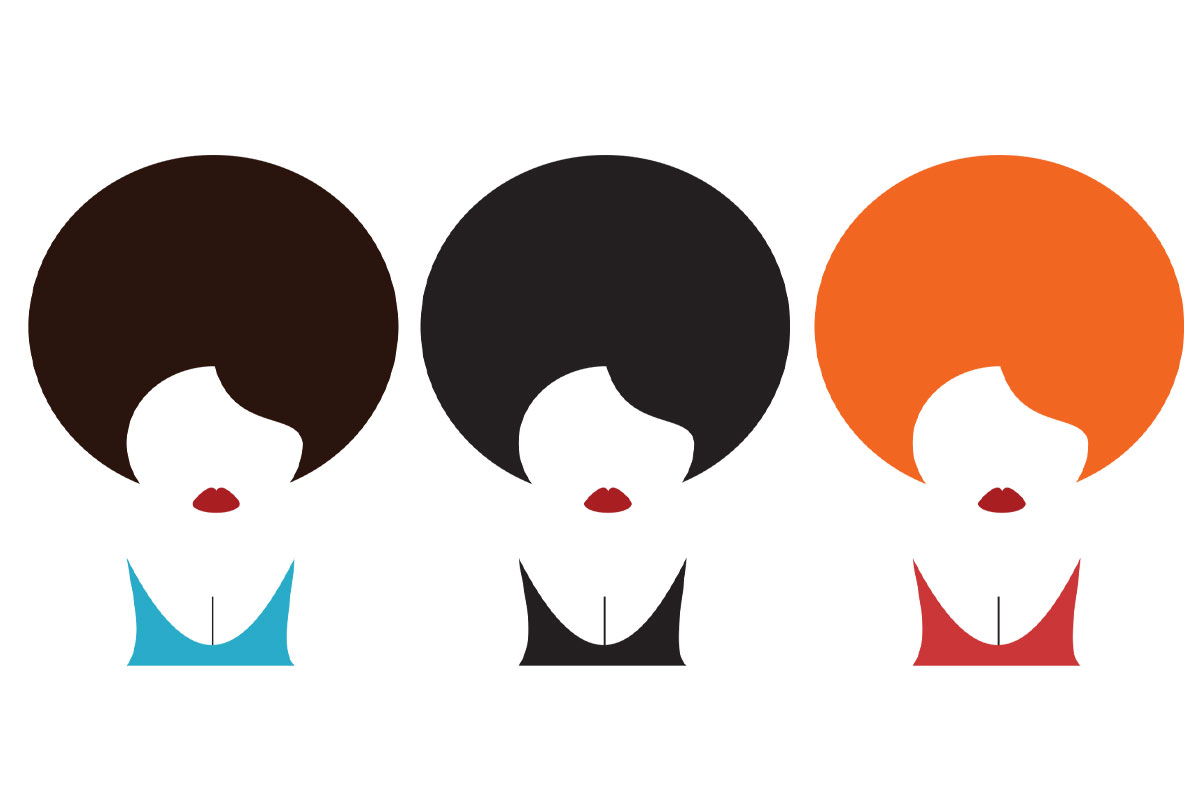by RENEE SKUDRA
I can still recall the day I moved to North Carolina seven years ago when a woman at the elementary school where I was working remarked to me “honey, y’all got a lot of hair, but you need to build it up and expand it sideways, too. Southern women love their big hair!” In California, I’d worn my hair flat and closely tucked about my shoulders. When I heard the sentiment several times in the community that “the higher the hair, the closer to God,” I knew a sea change was coming for me now that I was firmly ensconced on southern ground. I was going to have to reprogram my look, it would seem, if I were to fit in with the local culture. With some coaching, I was game to try.
The topic of big hair deserved some research, and I dug right into the annals of cyberspace lore. It turns out that big hair has its very own definition – hair which occupies a large amount of space above and around the head. Images of Priscilla Presley immediately came to mind as well as that of my own mother with a can of Aqua Net in hand, raising her hair to the roof with a bevy of hair pins and hairspray all held together in an intricate teased-up tower of style. As early as the 1960s, southern trendsetters started flouting voluminous “dos.” Memphis-native and singer Aretha Franklin wowed us with her song “Respect” and mile-high beehive. The sky-scraping style was developed by Margret Vinci Heldt, an Elmhurst, Illinois-based stylist and attracted admirers galore. The look involved piling one’s hair on top of the head in a conical shape and, with a copious amount of hairspray, arranging it in place. A musical group named the Ronettes adopted the look as their own. The result? Big hair stepped up to the plate and never looked back.
Through the 70s, 80s and 90s, we saw larger-than-life hair everywhere from homespun pageant queens to teen girls in any run-of-the-mill shopping malls. Wearing big hair was nothing less than a rite of passage for females who wanted to be in the societal know. Dolly Parton, famous country western singer and queen of big hair, unapologetically nailed it for big hair aficionados with her grandiloquent wigs that seemingly stood a foot out of her head on all sides and hung in waves of choreographed elegance. For Dolly, big hair was apparently a permanent state which was possibly connected to her vitality and success. I watched her concerts on-line (and those of others with big hair) just waiting for the carefully cared for and coaxed artistic achievement to fall off or down or flat or whatever hair can do under extremes of weather or other duress. But, the hair magically stayed intact, reaching for the sky, keeping its balance, a visual beacon that drew the eye to its fashioning and the mind to an appreciation for the cosmetic feat that it undeniably was.
Women were not the only ones who had a love affair with big hair. It spelled glamor, and in the 1980s, it became popular with both genders. Men got on the bandwagon with their own versions: pompadours which involved a lot of hairspray, wax and indeterminate amounts of exaggerated attention. If you think of Elvis Presley, Johnny Cash or Gene Vincent, you get the picture – each tricked out with large overshot dos which rocked in time to the beat of their music although nary a hair seemed to break from the do-fold. Who can forget James Brown wearing his hair in a conk pompadour until the day he died or his comment that “Hair is the first thing. And teeth the second. A man got those two things, he’s got it all”? He even remarked airily to a reporter fan at one of his concerts that he wore his hair in a big bouffant “so people don’t say WHERE he is, but THERE he is.”
Big hair has history – beginning with the giant Victorian wigs of the 18th and 19th centuries, worn by men and women alike. Even back then, big hair was expensive and took a lot of work for its production. Big hair doesn’t come cheap today either – consider the cost of styling or treatment techniques, hot rollers, hair mousse or gel, perms, crimping irons and finishing it all with bountiful amounts of hairspray to keep everything superbly in its place. Big hair is a fashion statement but also an expression of how one’s personal drama conveys values of pride in appearance and place, the talented hand of human agency in displaying a veritable art form. I’ve heard it said that “when it comes to hair, southerners will always go big or go home.” I’m working on that very sentiment as I sit here with a group of large Velcro rollers on my head, set to give my locks a sizable boost, fancy comb at the ready to tease it all up and volumizing products to help everything stay the distance. I’m hoping that I can replicate that cherished big southern hair if the humidity keeps itself at bay and the local creeks don’t rise.


















